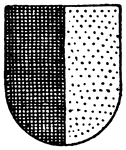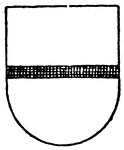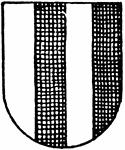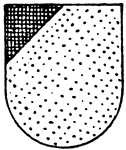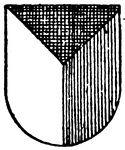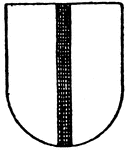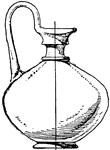
Tiger Rockfish
The Tiger Rockfish (Sebastes nigrocinctus) is a rockfish in the Scorpaenidae family of scorpionfish.

Larch Sawfly
The Larch Sawfly (Pristiphora erichsonii) is an insect resembling a black wasp in the Tenthredinidae…

Laurel Ornament
The Laural is an Evergreen that blossoms a yellowish white and its fruit ball is egg shaped in a blue…

Olive Ornament
The Olive Ornament is an Evergreen that blossoms a small white oval fruit, greenish black.
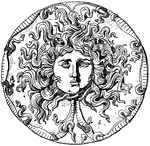
Farnese Medusa Head Dish
The Farnese Dish Medusa Head is an onyx patera, or black dish. It is a Roman design.
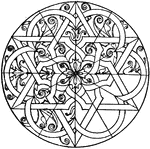
Niello Circular Panel
The Niello circular panel is made out of a black metallic alloy that was designed during the 16th century.
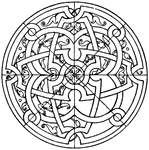
Niello Circular Panel
The Niello circular panel is made out of a black metallic alloy that was designed during the 16th century.
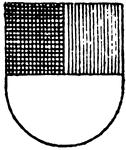
Per Fesse Ordinary
The Per Fesse Ordinary has an upper half that is per pale sable (black) and gules (red), and the lower…
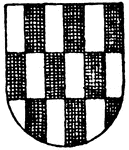
Paly of Six Ordinary
The Paly of six Ordinary is in colors argent (silver) and sable (black) with a fesse counterchanged.
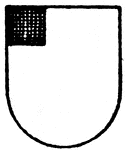
Argent Ordinary
The Argent Ordinary has a canton (corner) sable (black) on the dexter side (right side).
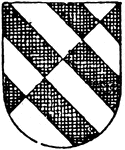
Per Bend Sinister Ordinary
The Per Bend Sinister Ordinary is a bendy of six. It has colors of sable (black) and argent (silver),…
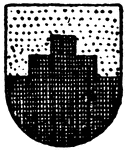
Or Ordinary
The Or Ordinary is a pile design in sable (black). The Per chevron design is in or and sable (black).
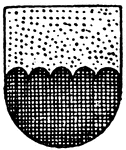
Sable Ordinary
The Sable Ordinary has a chief engrailed in or color, and a per fesse engrailed in or and sable (black).
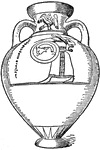
Panathenaic amphorae
Panathenaic amphorae were the large ceramic vessels that contained the oil (some 10 gallons, and 60-70…
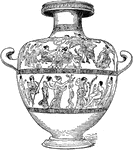
Hydria
A hydria is a type of Greek pottery used for carrying water. The hydria has three handles. Two horizontal…
Roman Aqueduct
"Part of a Roman Aqueduct. Aqueducts form one of the most characteristic features of Roman architecture.…
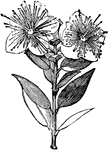
Myrtle
The Myrtle (Myrtus) is a genus of one or two species of flowering plants in the family Myrtaceae, native…

Comfrey
Comfrey (also comphrey) is an important herb in organic gardening, having many medicinal and fertilizer…

Comfrey Flower
Comfrey (also comphrey) is an important herb in organic gardening, having many medicinal and fertilizer…

Comfrey (Longitudinal Section)
Comfrey (also comphrey) is an important herb in organic gardening, having many medicinal and fertilizer…

Sepal and Fruit of Comfrey
Comfrey (also comphrey) is an important herb in organic gardening, having many medicinal and fertilizer…

Encephalon
"Diagram of Vertebrate Encephalon ... in longitudinal vertical section. Mb, mid-brain; in front of it…
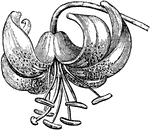
Turk's Cap Lily
Lilium martagon (Martagon or Turk's cap lily) is a species of lily. It has a widespread native region…
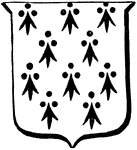
Ermine
"In heraldry, one of the furs, represented with its peculiar spots black on a white ground (argent,…
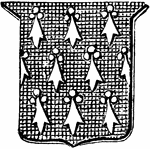
Ermines
"In heraldry, a fur of a black ground with white spots (sable, spots argent): reverse of ermine. Also…
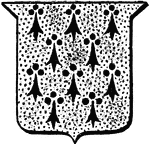
Erminois
"In heraldry, a fur of a tincture resembling ermine, except that the ground is or (gold)." -Whitney,…

Antique Ampulla
This Antique ampulla is designed in black painted clay with an ornament design on the outside.

Antique Ampulla
This Antique ampulla is designed in black painted clay with an ornament design on the outside.

Modern English Flower-Vase
This modern English flower-vase is an oriental style made of blue glazed clay with a black ornament…

Modern Japanese Jar
This modern Japanese jar is made designed with the colors of lacquered gold and black. The lid forms…

Greek Hydria
This Greek Hydria has a Kalpis form that is smooth and painted in black and red figures on the shoulder.…

Greek Hydria
This Greek Hydria is painted in black, reddish brown and white. Decorated of the highest class, the…
Greek Prochous
This Greek Prochous has a geometrical style made out of red clay and painted in black. It was used as…
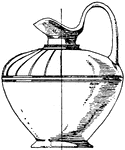
Antique Small Vessel
This Antique small vessel has engraved ornamentation and is painted in black clay.

Greek Lekythos
This Greek Lekythos is made of red clay and painted in black. The form is elongated and cylindrical,…

Greek Lekythos
This Greek Lekythos is made of red clay and painted in black. The form is elongated and cylindrical,…
Greek Lekythos
This Greek Lekythos is made of red clay and painted in black. The form is elongated and cylindrical,…

Greek Lekythos
This Greek Lekythos is made of red clay and painted in black. The form is elongated and cylindrical,…

Greek Lekythos
This Greek Lekythos is made of red clay and painted in black. The form is elongated and cylindrical,…

Greek Lekythos
This Greek Lekythos is made of red clay and painted in black. The form is elongated and cylindrical,…

Greek Lekythos
This Greek Lekythos is painted in black and white. The form is elongated and cylindrical, while the…

Greek Lekythos
This Greek Lekythos is made of red clay and painted in black. The form is elongated and cylindrical,…

Greek Lekythos
This Greek Lekythos is made of red clay and painted in black. The form is elongated and cylindrical,…

Greek Lekythos
This Greek Lekythos is made of red clay and painted in black. The form is elongated and cylindrical,…

Greek Lekythos
This Greek Lekythos is painted in black and white. The form is elongated and cylindrical, while the…

Phacoliths
Diagram illustrating the formation of phacoliths (shown in solid black). A phacolith is an intrusion…
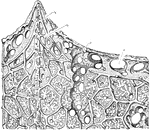
Upper Section of Sponge
An illustration of the upper portion of a sponge: p, Pore; s, Subdermal cavity; c1, chief fiver of the…
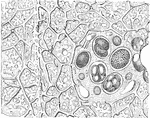
Lower Section of Sponge
An illustration of the lower portion of a sponge. O, OS, and M are illustrations of sponge eggs magnified…
Limestone Beds
Diagram showing the relationship of the black sapropelitic shales, the oil producers, to the limestone…
Fire Arrows of the 14th and 15th Centuries
"Fire-arrows, 14th and 15th centuries. An arrow formerly used, whether shot from a hand-bow or from…

Black-Faced Antthrush
The Black-Faced Antthrush (Formicarius analis) is a bird in the Formicariidae family of ground antbirds.…
Black Hills Dome
Cross-section of the Black Hills dome, showing the present structure and topography and the former continuation…
